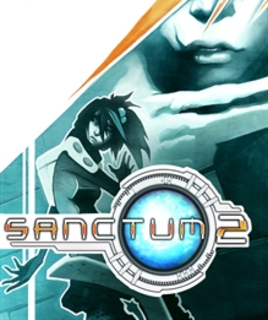INTRO:
The first Sanctum was a game that attempted to couple first-person shooting gameplay with tower defence gameplay. It was not an entirely excellent mix, due to problems such as towers, creeps and the terrain obstructing the player’s view, but it was otherwise functional and fun.
The sequel tries to tweak its gameplay formula, but it does so by implementing restrictions and progression systems that do not enrich the gameplay as much as it injects more tedium into it.
PREMISE:
Being a sequel, Sanctum 2 takes place within the same universe as that in the previous game. There has been further development of the story from the first.
Some similarities remain. Firstly, there are humans who are trying to colonize a planet by terraforming it with oxygen-producing “cores”. Unfortunately, this provoked a hostile reaction from the native ecosystem, which spawned the creatures known as “Lumes”. The Lumes are intent on destroying the cores, and in response, the colonists raised soldiers which are trained in building up static defences around them and, of course, shooting the hell out of the Lumes.
The protagonist of the previous game, an orange-haired girl called Skye, is no longer alone. She is one of two sisters, Skye Autumn and Sweet Autumn respectively. There are two other protagonists, who appear to be mainly there as narrative justification for a deliberate limitation of the player character’s capabilities, as will be elaborated later.
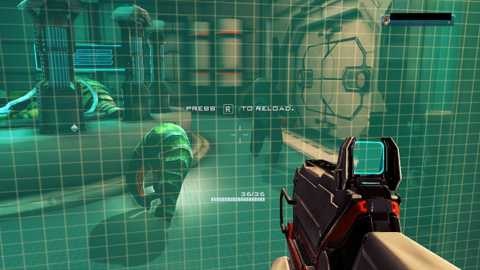
Unfortunately, the plot of the sequel is not very interesting, at least in the vanilla version of the game. Skye’s squad is sent on one mission to the next while eventually learning about the Lumes’ ultimate response to the presence of humans on the planet. The plot development would seem lean, especially in the eyes of a jaded story-goer, and the character designs seem to be one-dimensional (though this is mainly due to how short the story is).
If there is any reason that the player might want to be more invested in the story, he/she would have to look at places outside of the game for this (namely a bunch of webpages which are related to the Easter eggs in the game).
GAMEPLAY OVERVIEW:
Like its predecessor, Sanctum 2 has the player – and other players – plonking down tower bases to create a maze. This maze has to be effective at stalling the Lumes. As for the Lumes, they enter the level and attempt to follow the shortest route to the core, working their way through the maze.
Next, so-called “towers” are to be built on top of the tower bases. These are primarily intended to consistently inflict damage on the Lumes, assuming that the players have placed them at locations where they would be effective.
In addition, the players will need to chase after and shoot at the Lumes too, specifically those which the turrets did not manage to kill. (Unfortunately, there will be quite a number of Lumes which the turrets will fail to kill, especially if the players do not have the DLC-exclusive turrets). Meanwhile, the Lumes will fight back, if they are capable of doing so, though almost all of them ignore the turrets.
Any Lumes which reach the core will batter away at it, eventually destroying it if the players are not quick enough at removing them.
After eliminating all Lumes in a wave, the players are given a measure of reprieve, typically for repairing any broken defences. More importantly, this period is used to strengthen the defences further, typically by spending any credits which have been awarded for completing the previous wave.
The nuances and problems with the gameplay will be described in later sections.
PLAYER CHARACTERS:
For better or worse (mostly worse), there are now four player characters. Each is associated with one of the four primary weapons. In the previous game, these weapons happen to be available to the player character with few restrictions. In Sanctum 2, if the player wants to use a certain primary weapon, he/she would have to use the player character which has access to it.
Of course, each player character can eventually unlock one other primary weapon, but there is another limitation: any player character has only one primary weapon at a time, and one secondary weapon.
This segregation is of course part of Coffee Stain Studios’ attempt at introducing diversity to the gameplay. Unfortunately, this came at the cost of the versatility which was expressed by the player character of the previous game.
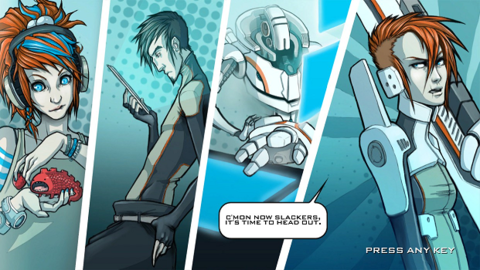
Fortunately, each of the player characters has an innate ability which further differentiate him/her/it from the rest. For example, Sweet Autumn jumps higher than the others, which is a useful advantage because the levels in Sanctum 2 have considerable verticality (more so than those in the first game).
LOADOUT & CHARACTER “LEVELS”:
Like the player character in the previous game, a player character in Sanctum 2 has a load-out, though this has been shackled by a progression system.
In the previous game, additional weapons and turrets are unlocked by simply advancing through the campaign mode. This is not the case in the sequel; advancing in the story mode will not unlock anything for the player character’s loadout.
Rather, the player needs to accumulate “experience” points; typically, these are obtained by completing playthroughs of levels, whether successfully or not. However, it takes at least two successfully completed levels to gain a character level. The threshold of experience points which are needed to obtain the next character level also raises for each subsequent level too. This combination of designs means that the player will have to grind a lot in order to progress.
Eventually, a determined and skilled player will come up with build strategies that end a level as soon as possible, if only to lessen the grinding. Perhaps this was an intended design goal, but such gameplay would only appeal to particularly ardent fans of Sanctum. Even so, these people have to be particularly tolerant of grinding-heavy gameplay.
Anyway, advancing in character levels unlocks more weapons and towers for equipping into slots in the player’s load-out. Speaking of slots, the number of slots for weapons and turrets is limited by the player’s level too.
This would not be a problem if the player is playing alone and is following the story campaign according to sequence. However, if a low-level player joins higher-level players on playthroughs of maps in multiplayer, they can be at a disadvantage. For example, if the current map is best handled with a weapon or turret that the low-level player has yet to unlock, this player would be a weak link in the team.
PRIMARY & SECONDARY WEAPONS:
Primary weapons are weapons which are specific to a player character; they decide how the player character is played. For example, Sweet Autumn’s Rex rocket launcher has her perching on places above the Lumes, firing onto locations where the rockets would harm the most Lumes.
The secondary weapon selections are much less restricted. There are many of them, and most of them function differently from the primary weapons. For example, there is a weapon which fires a continuous beam of electricity, something that none of the primary weapons exhibit. The secondary weapons are useful at complementing a player character’s offensive capabilities.
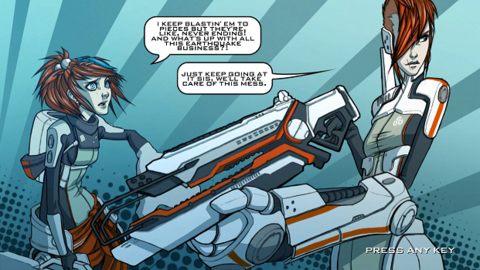
Each weapon has two firing modes. The default mode typically shoots projectiles, emit beams, or launch explosives which hurt things. The alternative firing mode may be nothing more than having the player aim down sights or through scopes, or they may be more esoteric, such as firing homing projectiles.
RELOADING:
Speaking of ammunition, the player characters have inexhaustible supplies of ammunition, which is perhaps important because a lot of successful strategies require the players to maintain pressure on the Lumes – something which can only be done with ample ammunition. What is not inexhaustible though is the magazine of a weapon; eventually, it will have to be reloaded, which is a process that takes a while.
However, the game does provide the player some leeway in this matter. When the reloading process starts, the player can switch to another weapon and fire away with that one; as for the weapon which is being reloaded, it continues to be reloaded while it is put away.
On the other hand, if the player puts away a weapon without starting the reloading process, it will retain its current magazine. Considering that the game already allows the convenience of having the reloading process continue while the player uses the other weapon, it would not have been too much to implement the automatic reloading of a weapon while it is put away.
PERKS:
Perks are an addition over the load-out of the previous game. As to be expected of perks, these are assets which are not entirely and directly under the control of the player. Some others trigger their benefits when the player does specific something (such as granting additional bonus damage for every third hit which landed), whereas some others enable certain capabilities (such as double-jumping).
Interestingly, some of the perks affect the towers and even the core. Incidentally, these are likely to be selected by experienced players who know how to work in synergy with the towers (or the core, in the case of players who have no problems with letting Lumes leak past the towers). For example, there is a perk which increases the damage of towers which are shooting at the same target that the player is shooting at. As another example, there is a perk which has the core inflicting surprisingly considerable damage on any Lume that is attacking it.
(By the way, there are not a lot of rewards for keeping the core completely untouched by Lumes, so this perk, which practically turns the core into a weapon, might be handy for dealing with leaks.)
For better or worse, the number of perk slots and the variety of perks which the player can use are also part of the progression system.
CHARACTER DESIGNS & COMIC PANELS:
The less-than-praiseworthy splitting of the player character of the first game into four less-versatile player characters would have been more forgivable if their personalities and styles are appealing. However, this is not entirely so.
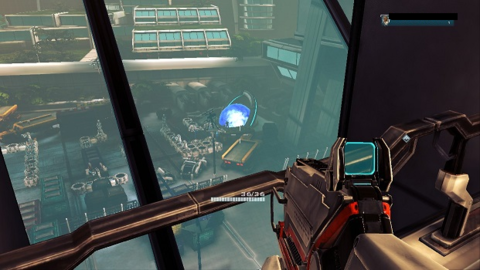
In-game, most of the portrayal of the characters is done via the comic panels which appear during the loading screens for the levels. Not every character would be likable to every one, however, especially a jaded person. (There is more exposition on the characters through mediums which are outside of the game, but this review does not consider those to be part of the game itself.)
Haigen and Skye Autumn would seem okay to people who tolerate nonchalant snarkiness, whereas the almost-always cheery Sweet Autumn is mainly in the cast to contrast against her serious sister and Haigen. Simo the robot, with its peculiar and sometimes sarcastic remarks, would be the most amusing character, if not for the nagging suspicion that it is there just to fill in the shoes of a zany robotic character.
More importantly, some of the characters’ personalities do not exactly match their gameplay styles. For example, Haigen seems the most risk-averse character (at least on the outside), but he is armed with a (massive) shotgun and has more health than the other characters, so he is best played by being up-front and personal with the Lumes.
Furthermore, the comic panels show characters using attacks which they cannot do in actual gameplay. For example, Skye Autumn is shown punching Lumes twice with her oversized gauntlet, but this cannot be done in-game. It is unfortunate that the comic artists (and the writers) for the game can foresee an immediate practical use for the comically huge gauntlets, but the game designers cannot.
The plot development in the comic panels will not make much sense if the player is not already following the campaign in sequence, but fortunately (or unfortunately, depending on how much importance one places on the relevance of the story to gameplay), following the story is not needed for the purpose of gameplay.
BUILDING TOWERS & ITS LIMITATIONS:
In the previous game, tower bases and towers are both purchased with credits which are obtained from completing waves. In the sequel, this has been made more complicated, and arguably not for the better.
Tower bases are now purchased with their own currency, which is simply spare tower bases. This means that the players cannot use their credits to build and complete mazes before concentrating on towers. In the previous game, this strategy may be more important than building towers first, because there are scenarios where stalling the Lumes is more effective than trying to increase the damage output of the towers.
In the sequel, the players have little choice but to follow an approach that balances maze-building with tower-building. In the previous game, experienced players follow a skewed approach for certain waves when this approach is more efficient.
More importantly, this means that the players will be resorting to shooting Lumes more often than they would rely on the towers to kill them. Although Coffee Stain Studios has implied that this is the intended design, this is not a change that every player of the previous game would like.
In fact, this change would seem tedious to players who are already quite tired of shooting mooks, such as the author of this article. Of course, one could argue that shooting mooks is part of the gameplay since the first game, but the first game has gameplay that is versatile and flexible in this regard, mainly because the player can build an effective network of towers and have it do most of the mook-killing.
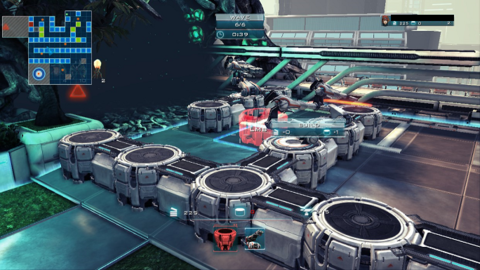
Furthermore, the players would continue to receive spare tower bases, even after the players have completed their desired maze designs. This would not have been an issue if the excess tower bases can be converted into credits, but there is no facility for this.
OVERCHARGE:
If there is one positive change which Sanctum 2 has over its predecessor with regards to tower-building, it is the “overcharge” feature.
Instead of building more turrets with their credits, players can choose to invest more money into towers which have already achieved their max level. This increases one or two of their statistics, typically their damage output. This is useful if the players have placed a few towers at very advantageous locations and wants to improve their performance.
Moreover, unlike tower upgrades, there are no thresholds to overcharging; every unit of credit which is spent on overcharging something will eke a performance increase out of the tower, no matter how small.
TOWER TYPES:
Some of the towers in Sanctum 2 appear to be retained from the previous game. For example, there is the Violator, which is a railgun turret with a prodigious range and which hovers far above its tower base.
The others are introduced in the sequel. For example, there is the ACP tower, which has area effect attacks that only damage ground-based enemies; this in turn makes them incredibly useful when placed at U-turns.
Each player can only bring a few tower types into a playthrough; more players are needed for additional diversity. Fortunately, most maps can be attempted with whatever a single player can bring, assuming that his/her tower selection is well-matched against the Lumes that would appear.
MINES:
Some of the maps have mines strewn throughout them. These can be retrieved and placed elsewhere, preferably in the path of particularly tough Lumes. Mines cannot be put away when they are picked up, however, so the players will have to stash them somewhere safe if they are not to be deployed yet.
There is a convenient design to them, however. A player that is hefting a mine around can somehow pick up more mines – up to five – and plonk them down individually elsewhere.
As the story campaign progresses, the mines change from looking seemingly human-manufactured to looking like they were grown from a native luminescent plant. They are functionally the same however.
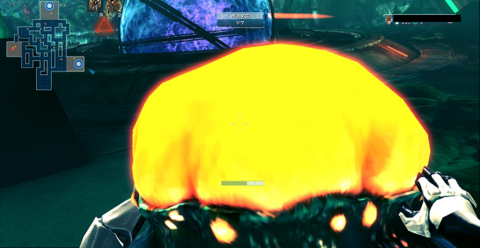
There is also a tower which generates mines, but it only generates mines after each wave. Therefore, it is only useful for waves which include powerful Lumes, but the players will need to weigh the opportunity costs of not using the credits on something else that is more versatile.
AMPLIFIER TOWERS:
There are some towers which increase the performance of other towers within their range. These towers will be of particular importance in maps where there are not a lot of viable places to build tower bases on.
Unfortunately, there are not a lot of maps where these would be very useful. In the vanilla version of the game, most of the maps require the players to apply pressure throughout the routes that the Lumes take. Spending credits on amplifier towers on these maps would lead to considerable opportunity costs.
(The DLC packages for this game have certain amplifier towers that are far more useful than the ones in the vanilla version, but these would be covered in reviews for the DLC packages – if there are going to be any.)
REPAIRING TOWERS:
Although the Lumes are more aggressive this time around, most of them will ignore the towers and tower bases that force them to take long routes towards the core. However, there are a few Lumes that is capable of thrashing towers in their way. The game will recalculate the routes for the Lumes when this happens.
Fortunately, any towers which are destroyed are not permanently knocked out. They can be repaired in the next building phase, and if the phase happens to be not timed, this is just minor busy-work. However, if the phase has a time limitation, the players need to decide which destroyed towers to spend their time on, especially if they have a pressing need to build additional defences.
LUMES:
The Lumes are the enemies which the players would face in the vanilla version of Sanctum 2.
Like in the previous game, the Lumes will move along the shortest route to the core. However, the Lumes no longer ignore the player character. Many of them, including all types of Walkers, will attack the player characters if they happen to be within proximity.
It should be mentioned here that a player character can shoot over tower bases at a Lume which is very close by, and not draw any retaliation. However, that is not the case for a player character that is standing on a tower base. There are Lumes with ranged attacks that can still hit player characters if they are perched on top of things. If the player characters are standing too far over the edge of tower bases, Lumes with melee attacks can hit them too.
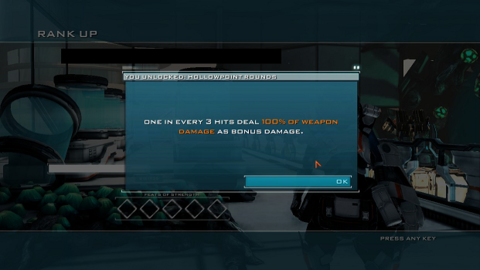
As for the Lumes, observant players would eventually notice that they can be categorized into several archetypes. These will be described in the following sections.
WALKERS:
The Walkers, with their absurdly small legs but huge arms, return in this game. This time, they actually use their arms, specifically to maul player characters who draw their ire. They form the bulk of most waves, their considerable hitpoints and size blocking a lot of shots that would have otherwise hit weaker Lumes. However, there is a special Walker that has a leaping attack that can potentially allow it to jump over lines of towers, which can complicate threat management.
MIDGETS:
There are Lumes which are small, fast and often spawn in huge numbers. These can quickly pass by towers if the players had not been building defences which are effective against such “spam” waves.
Among these Lumes, there are the ones which explode if they can get close enough to player characters. The explosions will not damage towers and tower bases, however; clever players would eventually learn how to trick them into exploding prematurely.
RHINOS:
These are the successors to the Chargers in the previous game. Like their predecessors, they will move faster as they spend more time moving in a single direction. This means that the players might want to build a maze with many turns if there are many waves of such Lumes, though this comes at the cost of narrower windows of opportunity to aim and shoot at the weak spots of these Lumes and other Lumes.
HOVERERS:
The Hoverers are floating Lumes which have impenetrable armour on their front facing. The entirety of their backs are weak spots however, so in maps where they spawn in waves, long stretches in the maze might be useful.
However, if the player thinks that he/she might be able to stand at a corner and shoot at their backs as they turn around the corner, he/she would be sorely mistaken. Hoverers have a telekinetic attack which not only damages a player character, but also fling him/her/it away across a considerable distance.
BOBBLE HEADS:
The infamous Bobble Heads return. They are still resemble drunken fools which rely on swaying their obvious weak spots around, but experienced veterans would not find them particularly challenging this time around.
SCREAMERS & SPITFLIES:
The Screamers are introduced in Sanctum 2. They primarily use ranged attacks, namely the projectiles which they launch from their big mouths. They are very easy to distract and kill, though there tends to be many of them to eliminate.
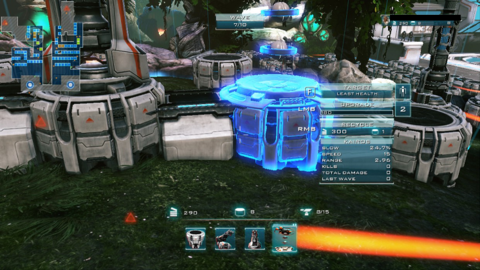
In the previous game, the Lumes resorted to using floating spores for their aerial approaches to the core. In Sanctum 2, or at least its vanilla version, they use flying versions of Screamers called the Spitflies. Like the Screamers, they are easy to distract, but being flying units, they can completely bypass the maze.
SOAKERS:
The Soakers return from the previous game, and they are still entertainingly effective damage sponges. Like the Bobble Heads, they have not been changed in any way.
ARMORED HEAVY:
The Armored Heavy is an interesting addition to the Lumes’ forces. As its name suggests, it is almost entirely armored. However, being a Lume, it does have a weak spot, specifically in its rear. This weak spot is easy to hit, as long as the player character is very close and the Lume is walking down a long straight line.
Handling it might seem simple, but the Armored Heavy is often spawned much ahead of the other waves. This means that the player character risks being attacked from behind while trying to whittle down the Armored Walkers.
BOSSES:
A scant few Lumes happen to be particularly powerful versions of the regular ones. These act as “bosses”, i.e. particularly nasty enemies that can end the players’ run if they do not expend effort at taking them down as soon as possible.
Each one poses a different challenge. For example, the Walker Patriarch is a ground-based Lume which will not follow the routes which have been set by the players. Rather, it just smashes through any towers and tower bases which are in its way.
Another interesting boss is the Super Heavy, a much bigger version of the Armored Heavy. It does not have a large weak point in its rear; instead, it has weak points on the back of its legs. Daring players would eventually learn that they can move underneath the Lume, which does not appear to do much to protect its underparts. However, it does have a powerful beam attack that can destroy anything in its path, and it so happens that when it fires this beam, it kills anything underneath it. (Learning this first-hand the hard way can be unpleasant.)
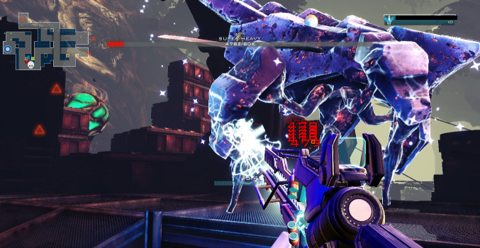
LUMES REACHING THE CORE:
In the previous game, the Lumes pretty much kill themselves when they reach the core. In the sequel, they will not kill themselves, but will continuously whack the core until they are killed or the core is destabilized.
At first glance, having the Lumes reach the core is not a good thing. However, there is one benefit to this: after they start attacking the core, their attention is fully invested in hitting the core; they will not do anything else. This means that it is very easy to shoot their rears, which is generally where their weak spots are.
Furthermore, there are perks which trigger when Lumes attack the core, such as shockwaves which radiate from the core and stun all Lumes in the map, and automatic hits which inflict heavy damage on Lumes that attack the core.
In Sanctum 2, having Lumes reach the core is a viable strategy. This is perhaps a change that can be considered an improvement over the first game, because it allows for more versatility in the playstyle of players – unlike the changes in the tower-building mechanics.
PLATFORMING:
In many maps, there are paths such as walkways and stairs that the players can use as shortcuts to get from one point of the map to another. There are also stacks of boxes or similar platforms that player characters can hop over to gain a vantage point. Furthermore, there are launch-pads which the players can use to make high and far jumps.
These methods of getting about reward the players for investing effort into becoming more familiar with the maps. (There are other rewards, such as finding more of the aforementioned mines and discovering Easter eggs. There will be more on Easter eggs later.)
In fact, due to the gameplay’s insistence on having player characters chase after Lumes and gunning them down, this familiarity will be important, especially in the maps which take place in industrial complexes or ruins.
PLAYING WITH OTHER PLAYERS:
By default, if the player is playing the game while he/she is online (and the player allows the game to communicate with other computers online), the player’s session is open for any other player to join. The player could set the session to invite-only, if he/she prefers not to play with strangers.
Each subsequent player after the first one will bring a few alterations to the session. The first of these is that the next wave of Lumes will be more numerous and have more hitpoints. This is an understandable change in the level of challenge that the game would pose.
If a player joins during a wave, the wave is not made more difficult. This also means that a player can join an ailing session and immediately make a difference, assuming that he/she is not goofing around. More importantly, any joining player will obtain credits and spare tower bases at the same amounts as the other players have obtained.
Any towers and tower bases that a player has laid down will still be around if and after the player has left the session. However, any tower bases and credits which the player has not spent are lost, which can be a problem.
On the other hand, the game does have subtle scripting which will alter the next wave of Lumes according to the amount of defences which the players have laid down.
Any towers and tower bases which have been laid down can be manipulated by any player. Although this allows more skilled players to correct the mistakes of less-skilled ones, it also means that mischievous players can cause grief to others by removing critical towers and tower bases.
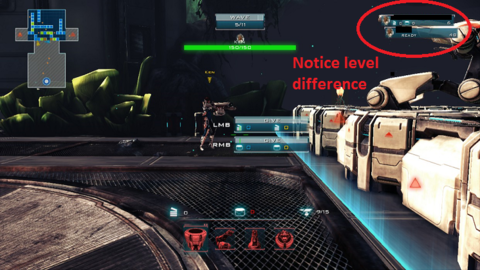
ADDITIONAL CHALLENGE OPTIONS:
Before starting a session, a player can choose to play it with the default settings or add one or more (or all) options to increase the challenge that would be posed by the waves of Lumes. For example, there is an option which causes all Lumes to regain hit points automatically over time.
Completing sessions with additional challenges grants more experience points. It goes some way to reduce grinding, especially if the player has developed a useful strategy that takes the additional challenges into account.
VISUAL DESIGNS:
Sanctum 2 reuses most of the artstyle that was seen in the previous game. For example, the player characters are all lanky and waif-like, and one of their arms always ends in an oversized gauntlet when they are geared up for missions. In contrast, the other humans would seem to have bodies that are better-proportioned, if not for the fact that they are almost always wearing bulky hazmat suits.
The presentation of the characters in the comic panels and in actual gameplay can be worlds apart, however. The Autumn sisters, in particular, do not look much like their comic counterparts (likely because their comic versions have too many edges to their designs to render exactly).
The sequel retains the player character’s signature oversized gauntlet. The player character’s weapons are huge and seemingly larger than those in the previous game. The sight of the waifish player characters toting them around (especially in the comic panels and hand-drawn artwork) can seem entertainingly silly.
The Lumes still resemble bizarrely proportioned humans, at least for strains that look humanoid at all. Speaking of which, there are a lot more inhuman-looking Lumes this time around, many of which look crustacean – this is likely an attempt (conscious or otherwise) by Coffee Stain’s artists to inject some Lovecraftian appeal to them.
Much of the style of the graphics depends on pervasive use of particle effects and luminance. This is understandable in the case of the Lumes because of the canon behind their naming (and of course, their general appearance). A lot of particle effects can also be seen when the towers do their work on the Lumes, which is perhaps a good way to tell whether they have been effectively placed or not.
However, all that bling does not contribute as much to the gameplay as the visual indicators which are used to show the players’ progress at whittling down the Lumes. Hitpoint bars pop up when the player is looking at particular Lumes. Numbers of different sizes and colours spray out of Lumes when they are shot at, indicating whether the player had been hitting them at soft regions or not.
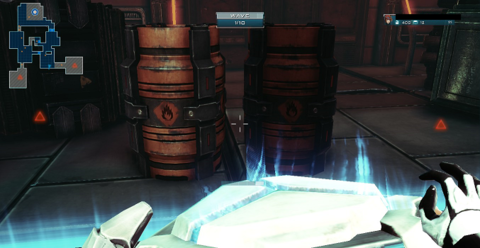
SOUND DESIGNS:
Leonard Hummer is the composer of the music in Sanctum 2. There are some tracks which sound like they are the product of the modification of the tracks in the previous game, but most of the tracks are otherwise fresh. The tracks switch whenever the build phase gives way to the combat phase and vice versa, but there does not appear to be a track which is used for when the core is severely damaged. (For the purpose of alerting the player to the core’s status, an on-screen visual indicator is used instead.)
The sounds of shots hitting Lume flesh are often drowned by the sounds of combat. The towers, in particular, are very loud when they are doing their work, which is perhaps a good thing as it helps observant players figure out where the Lumes are if their view is obscured. Besides, different towers have different sound effects. (On the other hand, the game’s sounds sometimes turn faulty, causing the sound effects of only one type of tower to be heard.)
The Lumes make inhuman utterances when they die, which helps players determine when to switch targets. (Their models also collapse into pathetic ragdolls when they die, which is perhaps a more helpful indicator.)
There are voice-overs for the player characters; these mostly serve gameplay, such as indicating when the core is under attack, when they are reloading or when they are being hurt. There are not any lengthy voice-overs where they narrate the going-ons.
EASTER EGGS:
Like the previous game, the official maps have Easter eggs. In the sequel, a considerable portion of these are references to the previous game, such as content which was not retained from the previous game or the previous designs of towers which have been updated for the sequel. The rest are popular culture references, one of the most easily found examples being an NPC playing out a scene from one of the Lord of the Rings movies.
Many of these Easter eggs will require the player to do a lot of platforming. This is perhaps easier in the sequel than it was in the previous game, thanks to the greater mobility of the player characters. Certain Easter eggs will need more than just platforming though; the player has to discover where there are gaps in the collision programming in order to move through walls and floors.
On the other hand, there are some Easter eggs which require the player to do some ludicrous things, like reaching switches and buttons which are placed at unbelievable places just for the sake of being difficult to reach.
Some Easter eggs lead to websites which have story-telling bits about the background of the characters and the backstory of the Sanctum series. It is unfortunate though that the story-telling in these is better than anything in the actual game.
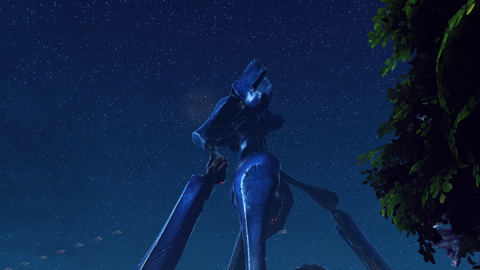
SUMMARY:
At first glance, looking through the content of Sanctum 2, it would appear that many improvements and additions have been made. There is more variety in the weapons and the Lumes, and there are additional gameplay elements like Perks. Furthermore, where the previous game has almost no story whatsoever, there is an attempt at telling one in the sequel. Moreover, the Lumes now pose satisfyingly increased challenge, especially when the maps spawn them in sequences which make them much harder to manage.
Unfortunately, the story-telling is affected by Coffee Stain Studios’ decision to partition the story for the later DLC packages and to split off backstories to put into content outside the game. Much of the gameplay also relies on a progression system that has the player going on grinding runs.
Most importantly, the tower-building gameplay had been scaled back in favour of having players chase down and shoot Lumes more often – perhaps more than they would like.
Sanctum 2 is strictly for people who are ardent fans of the series. For anyone else, especially those who place considerable emphasis on value, they might want to consider waiting for a “Gold” version or bundle purchase which includes all of the DLC together with the original package.
P.S. The later DLC packages introduce weapons and towers which supersede some of the weapons and towers in the vanilla version of the game, thus diluting the value of the vanilla version.
